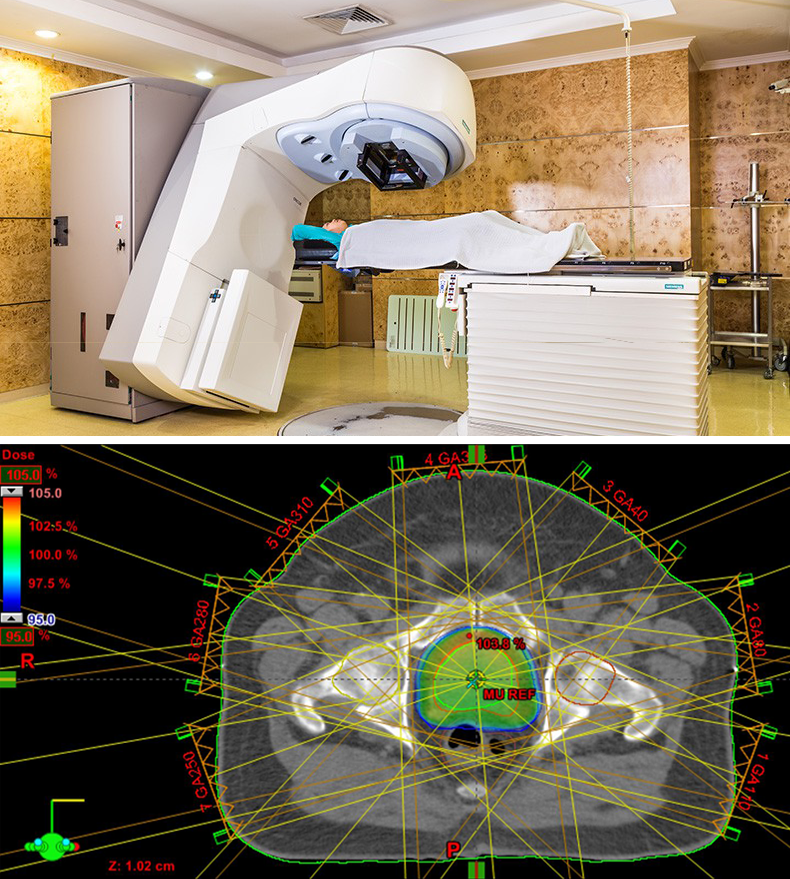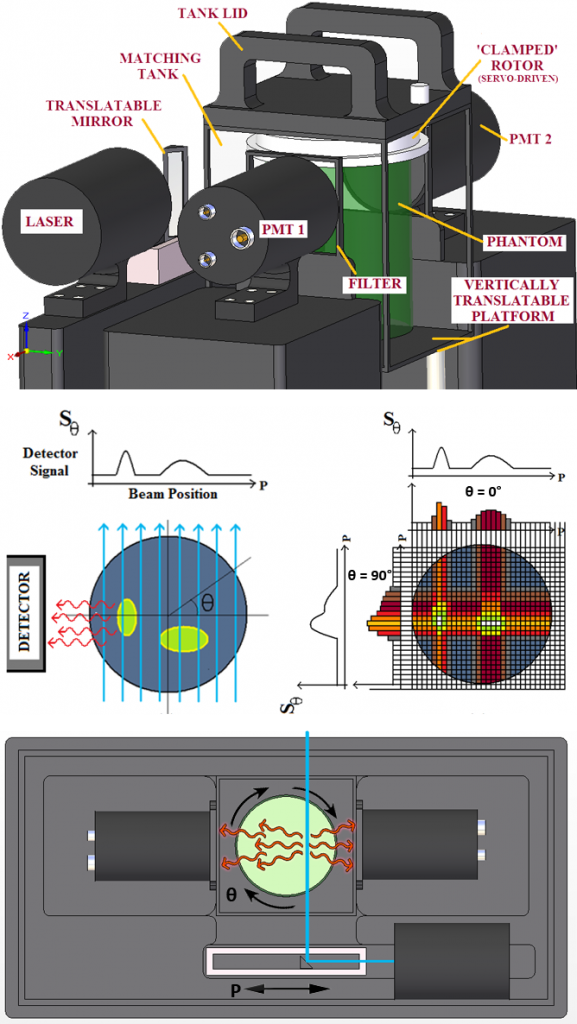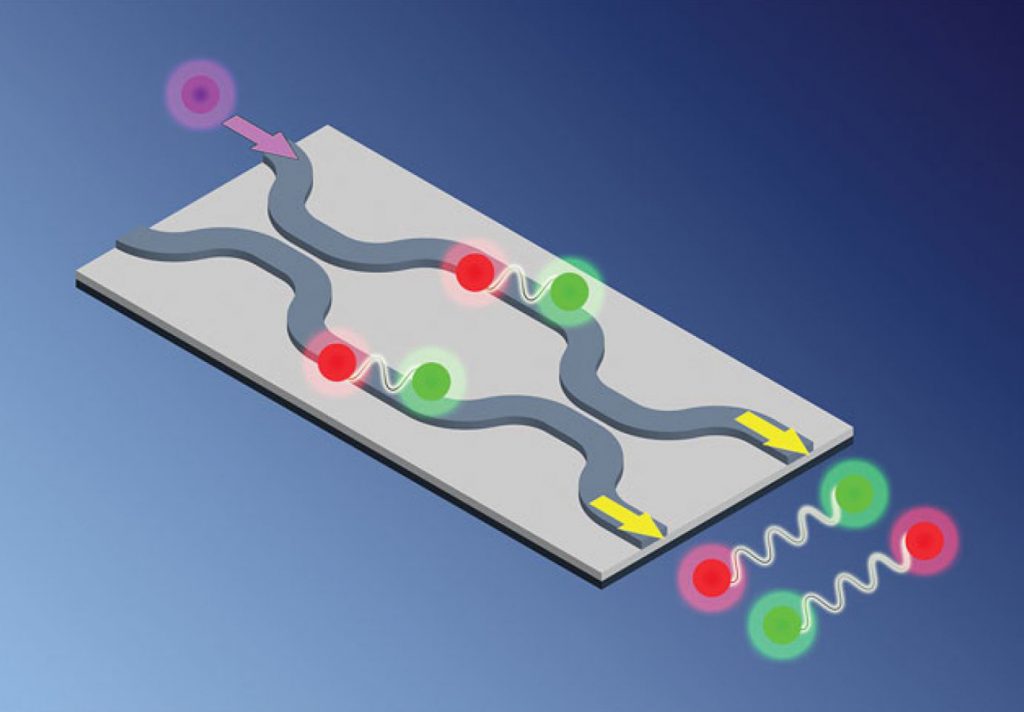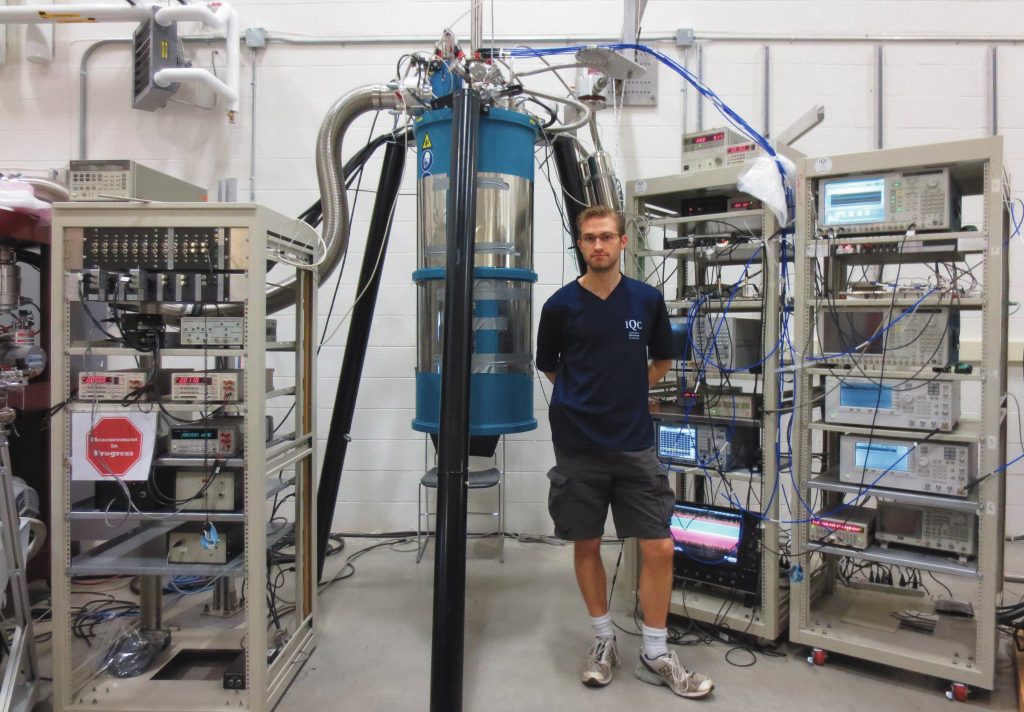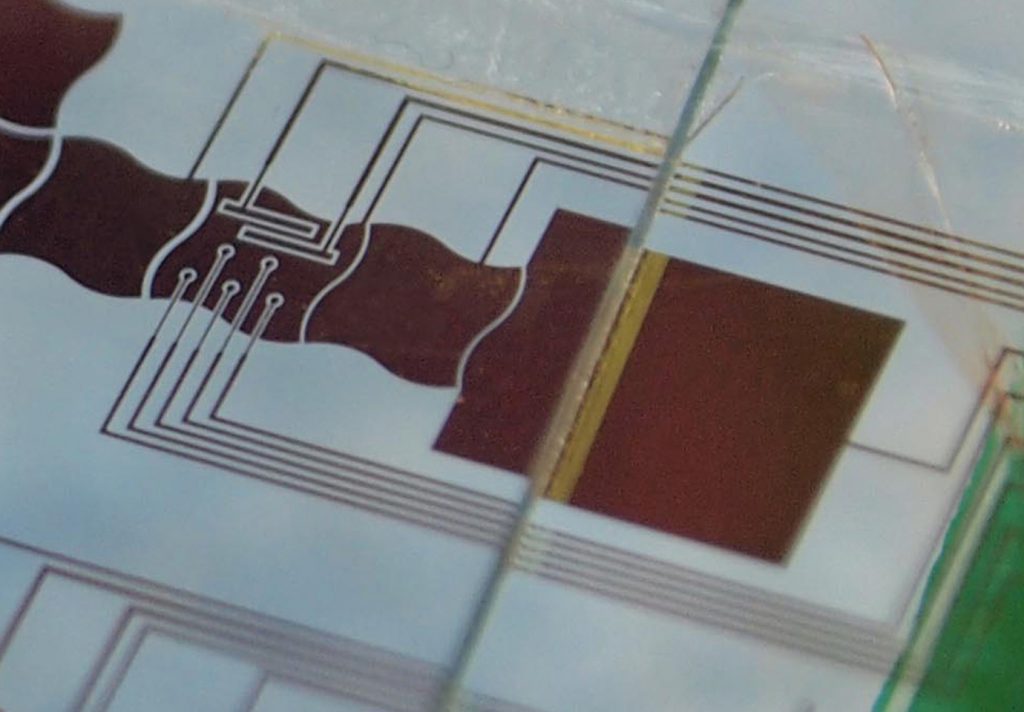Radiation Dosimetry using DNA Phantoms
3D dosimetry (the process of measuring radiation dose distribution) is typically achieved with a gel-like phantom that turns opaque when exposed to ionizing radiation. However, a more direct measure of biological radiation dose can be obtained by monitoring the fracturing of DNA. This has recently been made possible by the development of “DNA Dosimeters”, consisting of small bio-engineered strands of DNA that, when damaged by the effects of radiation, become fluorescent and therefore emit light when illuminated with the right laser colour.
My challenge was to find a way to use this radiation-induced fluorescence to create a 3D reconstruction of the dose distribution, after a jar of the gel-suspended DNA is exposed to the intended radiation treatment plan.

A quencher molecule (Q) suppresses the response of a fluorescent reporter (R) through Förster Resonance Energy Transfer (FRET) until the DNA strand is severed by radiation.
Check out some of my other past projects!
I’ve worked on technical projects in a variety of fields. Here are some highlights:
